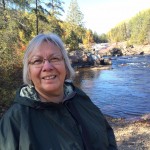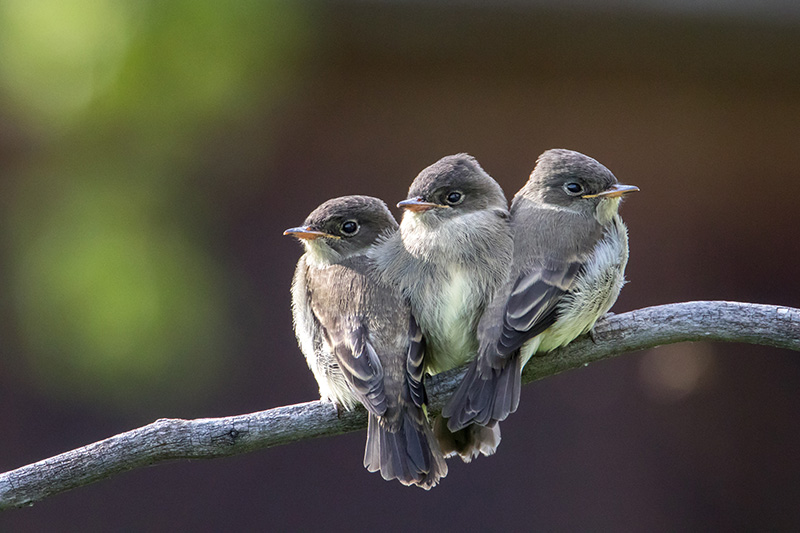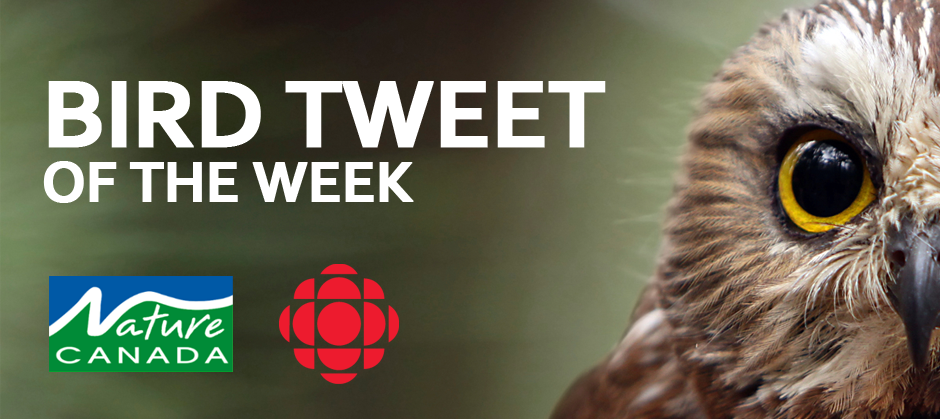Take a peek at the Wood-Pewees!

Valerie Assinewe,
Guest Blogger
They may be small and inconspicuous, but the songs of the Wood-Pewees are unmistakable, and a joy to hear. This month’s 2017 Nature Canada calendar features these forest flycatchers.
Where do they live?
The Eastern Wood-Pewee (Contopus virens) is native to eastern North America, preferring forest and shrubland ecosystems; whereas the Western Wood-Pewee (Contopus sordidulus) favours the open woodland and forest edges of western North America. They stay in these breeding areas from April to October, and winter in northern South America.
What do they look like?
Pewees are small birds: 14-16 cm in length, weighing 11-14 g. Males and females are similar in appearance. Adult birds are generally greyish-olive overall. Their underparts are pale, and their long wings have two pale bars. The bill is black with a pale orange lower mandible.
What do they eat?

Western Wood-Pewees by Tony LePrieur
Pewees are tyrant flycatchers—from the Tyrannidae family—and, as is typical of this group, they are insectivores. From a high perch, they sally back and forth to capture flying insects with great precision. They also collect insects on leaves or branches. On occasion, they eat berries and seeds.
How do they reproduce?
During the breeding season, the otherwise solitary Pewees form monogamous pairs. The pair finds a nesting site, generally a tree cavity or crossed tree branches, and the female builds the nest. She lays 2-4 eggs and incubates these for 14-15 days. The pair feeds and protects the nestlings for 14-18 days.
Interesting stuff
- The Eastern Wood-Pewee and the Western Wood-Pewee are nearly identical. Fortunately, you can tell them apart because of their respective territories; the Eastern Wood-Pewee lives in eastern Canada and the Western Wood-Pewee in western Canada. The breeding ranges rarely overlap but where they do, the species do not interbreed.
- You can also distinguish the Pewees by their distinctive songs: the Western has a harsh, buzzy peer, compared to the slurred whistled pee-ah-wee of the Eastern.
- For all you logophiles: A group of pewees are collectively known as a “dribble” or a “squirt”.
Unlike the more robust population of the Western Wood-Pewee, the Eastern Wood-Pewee is designated as of “Special Concern” in both the federal and Ontario Species At Risk lists. Loss and degradation of habit due to human activity are the threats to this species. With your continued support, we can all continue to enjoy the calls of this songbird by supporting activities that protect our forests.


